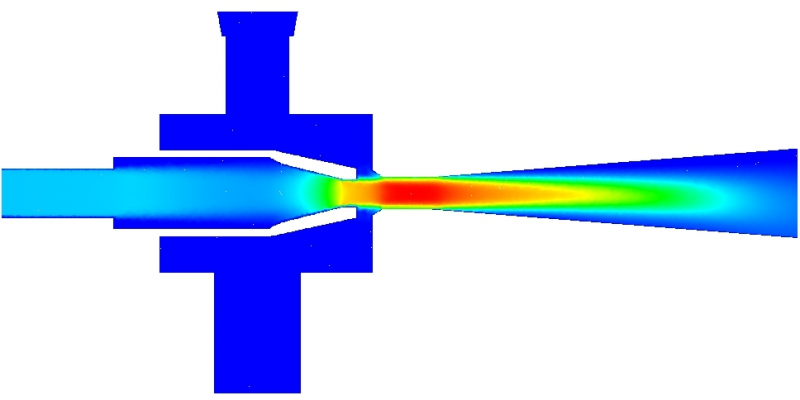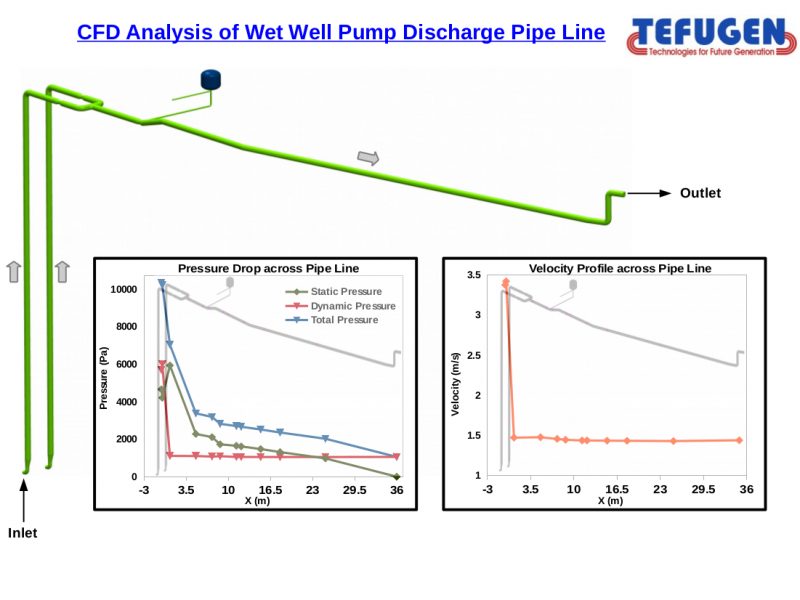introduction
Operating in the oil and gas sector necessitates the employment of highly advanced machinery with complex physics reactions, multiphase flow, non-Newtonian theology, and mixing, among other things. These devices have a very poor life expectancy while in use and are prone to significant rates of erosion due to the variety of operating circumstances. The use of CFD for such equipment design and optimisation in the oil and gas industry has expanded quickly. The outcomes of the CFD simulation offer a qualitative assessment of the flow mechanism and related phenomena like slugging and erosion. This aids designers and operators in streamlining product delivery, extending the life of equipment and flow lines, and resolving flow-related issues. CFD is mostly utilised for multiphase flow and mixing, hydrodynamic simulation, heat transfer analysis, nozzle flow applications, pump analysis, and evaluation of pipe lines and related components.
Mixing Tank
Predicting some of the essential characteristics, such as mixing time and the efficacy of the impeller or blade design in the process of mixing, could lead to the rational design of the mixing process, stirrers, and other components of a mixing tank. Engineers need this data at an early stage in order to provide a better and more effective mixing tank; hence, CFD-based modelling techniques are applied. Using CFD, it is feasible to take an integrated approach that links the impeller design, vessel geometry, flow field created, energy balance, and design requirements that are essential for the construction of stirred tanks.
Ejectors
Ejectors are widely employed in a variety of technical applications, including the water purification process, the oil and gas industry, the refrigeration system, the propulsion system of aviation engines, and numerous safety systems used in the process and chemical industries. Design engineers may now better grasp the intricate nature of the flow inside ejectors and optimise it for their intended uses with the help of CFD. With the use of CFD methodologies, the design and optimisation of ejectors are now accomplished more quickly and effectively.
We offer the following services
- Assessing the performance characteristics of ejectors and determining the maximum efficiency points
- Assessing the loss coefficient for any given design of ejector flow and pressure loss coefficient
- Optimization of ejector geometry
- Assessing the Cavitation Phenomenon

Piping system analysis
Piping systems are critical components of many industrial and commercial applications, including power generation, oil and gas production, chemical processing, and HVAC (Heating, Ventilation, and Air Conditioning) systems. Proper analysis of piping systems is essential to ensuring their safety, reliability, and optimal performance.
Computational Fluid Dynamics (CFD) is a powerful tool for analysing piping systems. It can be used to simulate and analyze fluid flow, heat transfer, and other related phenomena within the piping system, providing valuable insights into its performance and identifying potential issues.
We offer the following services
- Pump Head requirement prediction
- Head loss and other flow loss assessments
- Heat transfer modelling
- Surge and cavitation phenomena modelling
- Utility piping routing configuration

Our knowledge in these subjects could help you with
- Performance assessment of mixing blades
- Flow and velocity distribution patterns
- Design optimisation of blades and tanks
Other Services Include
- Multi phase flow analysis in pipes
- Multi phase flow analysis of manifolds and pipe junctions
- Multi phase flow analysis in pumps and separation equipment
- Sand erosion and sand blockage assessment
- Sloshing analysis
- Surge phenomenon
- Cavitation phenomenon
- Water hammer analysis
- Gas-phase and liquid-phase reactor flow analysis
- Slurry flow analysis
